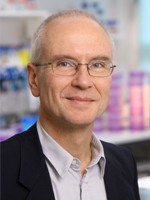From waste to fertilizer – phosphorus and carbon waste mining as nutrient recycling strategy for the future (FERTI-MINE)
Sustainable soil management strategies will be the key for food production to keep pace with a rapidly increasing world population. Phosphorus is one of the most important plant nutrients. The natural resources of rock phosphates suffer from dwindling quantities and increasing contaminant concentrations whereas open elemental cycles distribute phosphorus in surface waters or at waste dumps. The main objective of FERTI-MINE is the development of a production process for innovative fertilizers based on recycling of phosphorus and organic carbon from secondary resources. Thus the elemental cycles will be closed and limited primary resources of phosphorus will be saved. FERTI-MINE deals with the recycling of nutrient- and carbon-rich residual materials (e.g. sewage sludge, agricultural wastes) with thermo-chemical processes (pyrolysis, hydrothermal carbonization, gasification) for the production of fertilizers and soil amendments.
The research topics of FERTI-MINE focus on:
• Analysis of the availability of different waste materials, including characterization and identification of the most promising options for recycling of nutrients.
• Study of different carbonization methods for the treatment of the waste materials and fertilizer production, including effects of process parameters (time, temperature, pressure etc.) and mixtures of input materials.
• Investigation and assessment of the characteristics and the application potential of the products, including their suitability as fertilizer and/or soil amendment.
• Analysis of the material flows (input and output) of the studied processes (pyrolysis, combustion, gasification, hydrothermal carbonization) and optimization of processes.
In the frame of this project technologies for the production of phosphorus and micronutrient fertilizers as well as biochars/hydrochars from waste water treatment and from agricultural residues will be developed and tested. The aim is a diversification and optimization of products for different application purposes with special attention to nutrient availability for crop plants.


